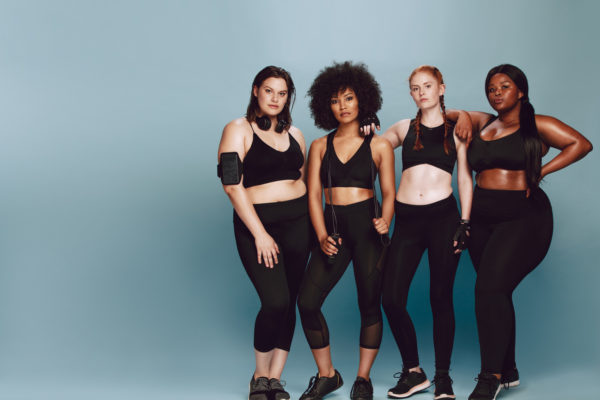The body positivity movement is not an equal-opportunity provider of positivity. In fact, promoting positivity may be missing the point altogether.
Body positivity is a social movement that emphasizes positive body image and equal representation. But it overemphasizes the appearance of bodies and minimizes – or outright evades – the real differences in privilege afforded to those who meet the white and thin proportionate ideal.
It’s true that negative body image is a normative experience in the U.S: 85% to 95% of women are extremely dissatisfied with their bodies. It also makes sense that our relationship with our bodies is complex: The way our brain interprets sensory information to make assessments about how the body looks and moves can be inconsistent and unreliable. Indeed, body image is processed in multiple parts of the brain, so we can feel differently toward our bodies throughout the day and from day to day.
Although neuroscience tells us something about the way we inhabit and view our bodies, we also need to consider how sociocultural factors influence our embodiment. Perhaps most obvious is the perpetuation of sexism and objectification of women and girls in the media. Arguably most indicative of the body positivity movement is the Dove campaign, a marketing-advocacy approach that promotes representation and positive body image in the media.
However, body positivity can become toxic because it still emphasizes physical appearance of bodies over the appreciation, functionality and inherent dignity of the body. Even when we are accepting of all shapes and sizes, which is important, we are talking about a positive relationship with appearance. It’s not that this is bad; it’s just incomplete. Engaging the world through a body – tasting, breathing, moving, touching, eating and aging – is so much more than merely appearing in a body.
Perhaps most importantly, though, the body positivity movement is largely perpetuated by and benefits white women. In the name of “keeping it positive around here,” white female bloggers, for example, may unknowingly minimize the differences and inequalities based on race, weight/shape, age, and so on, in the view of fostering happy, “empowered” feelings about the body.
We engage in color blindness when we say all bodies are good without critically examining how society continues to place more value on white, thin bodies. Interestingly, body positivity has long been a part of black culture, but much of the modern movement has been co-opted by white women to promote an unrealistically positive view of the body.
The Wear Your Voice campaign called the #BodyPositivityinColor addresses the ways the movement has failed women of color and how it can better serve black and brown women, femmes, trans and nonbinary people. This includes recognizing the ways emotions – other than positivity – characterize an embodied experience such as rage, humiliation, discomfort and resentment. They argue that the movement puts the onus on individuals to change their feelings toward their bodies without resisting the systems that marginalize nonnormative bodies.
The body positivity movement has been a necessary and instrumental call for the celebration of bodies, and this has been effective in calling for diversity representation in the media, particularly through the recent glittery example of musician Lizzo. But body positivity cannot merely be a reaction – or a set of coping mechanisms – for dealing with the white and thin ideal. Instead, we need to assume an actively resistant stance, acknowledge that we are more than appearances and that embodiment is influenced by the an ideal that marginalizes the experiences of people who do not fit the ideal.
If the movement is about representation, we need to recognize the ways we are contributing to a color-blind body positivity and fostering unsafe spaces for women of color and individuals who are trans or nonbinary. We can start by supporting campaigns such as #BodyPositivityinColor, educating ourselves on the current and historical oppressions of bodies that do not fit the white and thin ideal, and passing the mic to women of color on body topics. Perhaps then we can focus less on body positivity and more on body justice.
Erin Nolen is a doctoral student in the Steve Hicks School of Social Work at The University of Texas at Austin.
A version of this op-ed appeared in Psychology Today, Houston Chronicle and the San Antonio Express News.




